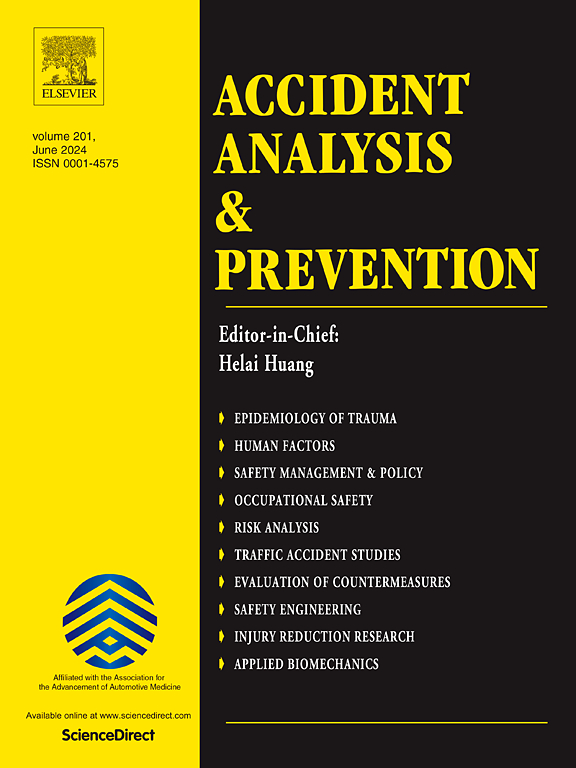Crash localization and traffic impact assessment via spatio-temporal analysis of connected vehicle data
IF 5.7
1区 工程技术
Q1 ERGONOMICS
引用次数: 0
Abstract
Crashes pose high risk to traffic participants. To enhance rapid response capabilities and improve traffic management, accurate and immediate detection of crashes is essential. This paper investigates a probe vehicle data-based crash detection approach for freeways that solely relies on transmitted position data by a connected vehicle fleet. The algorithm is capable of reconstructing time and location of a crash, even if the vehicles directly involved in the crash are not connected. The method can detect the emergence as well as the resolution of the crash faster than currently used methods. It surpasses traffic information services by detecting crashes 07:40 min earlier and the resolution of the congestion 05:59 min faster. The method also improves spatial uncertainty by detecting precise crash locations instead of incident ranges. The algorithm can classify the detected crashes based on their characteristic traffic patterns, which may facilitate different reaction strategies. Relying solely on global positioning system (GPS) data, it offers a low-cost, real-time solution applicable on a large scale with existing vehicle hardware. A dataset from a connected vehicle fleet, along with ground truth crash data, verifies the proposed method’s results. The algorithm achieves an F1-score of 82.45 % on a dataset containing 1601 congestion patterns with 50 crashes. The paper demonstrates its effectiveness across different regions with varying fleet penetration rates, using empirical examples from freeways in the USA, Germany and the UK.
求助全文
约1分钟内获得全文
求助全文
来源期刊

Accident; analysis and prevention
Multiple-
CiteScore
11.90
自引率
16.90%
发文量
264
审稿时长
48 days
期刊介绍:
Accident Analysis & Prevention provides wide coverage of the general areas relating to accidental injury and damage, including the pre-injury and immediate post-injury phases. Published papers deal with medical, legal, economic, educational, behavioral, theoretical or empirical aspects of transportation accidents, as well as with accidents at other sites. Selected topics within the scope of the Journal may include: studies of human, environmental and vehicular factors influencing the occurrence, type and severity of accidents and injury; the design, implementation and evaluation of countermeasures; biomechanics of impact and human tolerance limits to injury; modelling and statistical analysis of accident data; policy, planning and decision-making in safety.
 求助内容:
求助内容: 应助结果提醒方式:
应助结果提醒方式:


